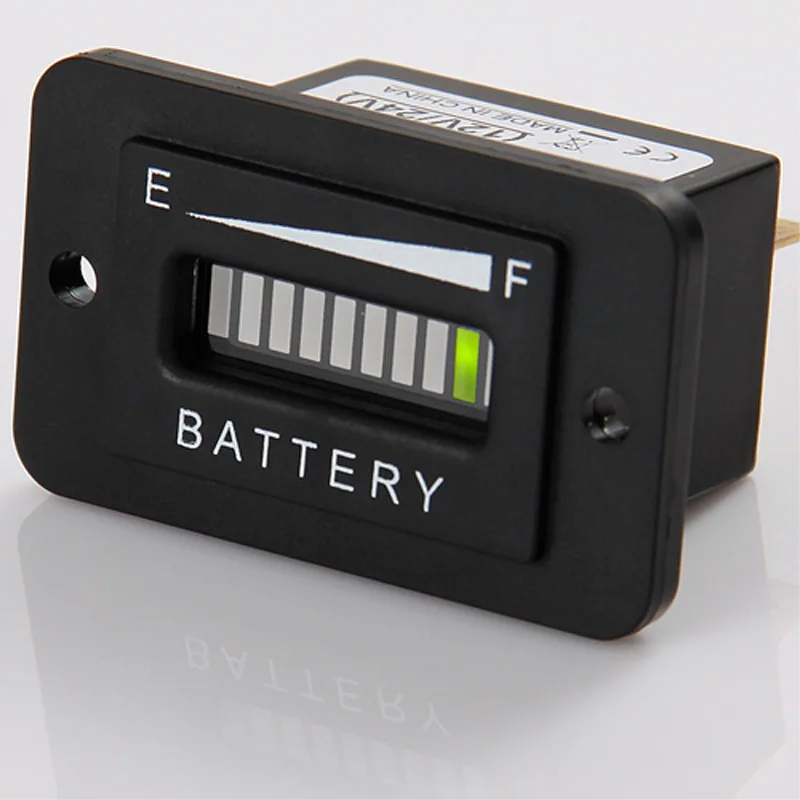

Use a voltmeter to check the charge level on your batteries, and use a charger to bring any low batteries up to full charge before they go out the door.Simple Battery Level Indicator Circuit designed by using IC LM3914 – dot/bar display driver from Texas Instruments. Your battery inventory should be arranged so your oldest batteries are the first on the shelf, with the newest batteries in the back. Batteries are “dry charged” at the factory, but can discharge over time as they sit on the shelf. The battery cables may be color coded red for positive and black for negative (but not always, so watch out!).įinally, batteries should be fully charged before they are installed (to reduce the initial load on the charging system).
#CAR BATTERY INDICATOR NO COLOR PLUS#
The negative battery post is marked with a minus (-) sign, while the positive battery post is marked with a plus (+) sign. Except for some antique vehicles, all modern vehicles have a negative ground electrical system. Reversing the connections can damage the battery, charging system, and on-board electronics (including the PCM). The battery must be replaced.īe extra careful when reconnecting battery cables to not reverse polarity. If the battery has a sealed top and water cannot be added to the cells, do not attempt to recharge the battery. A yellow or clear indicator tells you the electrolyte level inside the cell is low and the battery needs water.

A dark indicator (no dot visible), means the cell is low and the battery needs to be recharged. Some batteries have a built-in “charge indicator.” A green dot tells you the battery is 75 percent or more charged. If the reading is 12.45 volts or less, the battery is low and needs to be recharged. A reading of 12.66 volts indicates a fully charged battery. This can run the battery down fairly quickly if the vehicle sits for long periods of time, is driven only infrequently or for short trips, or has a weak battery or low charging system output.īatteries need to be tested for two things: state of charge (a base voltage measurement that shows if the battery is low or fully charged), and capacity (a load or conductance test that checks the condition of the plates inside the battery).Ĭonnecting a voltmeter to the battery’s positive and negative terminals (key off and all lights and accessories off) will reveal the charge level of the battery. Because of this, the key-off power drain can be fairly high in many late model vehicles (80 milliamps to several hundred milliamps). Many go into sleep mode and shut down after a certain period of time to reduce the power draw, but others (such as the antitheft system, keyless entry system and PCM keep-alive memory) are always on. The electronic modules in today’s vehicles draw a small amount of power from the battery to keep their memories alive when the vehicle isn’t running. Even so, their average service life is typically five to six years depending on use.Īllowing a vehicle to sit for a long period of time without being driven (say a week or more) can allow the battery to run down. Gel-cell batteries that do not contain liquid acid electrolyte are better in this respect because they are less affected by evaporation. The average service life of a conventional lead-acid car battery is only about four to five years, and typically a year or so less in extremely hot climates.


 0 kommentar(er)
0 kommentar(er)
